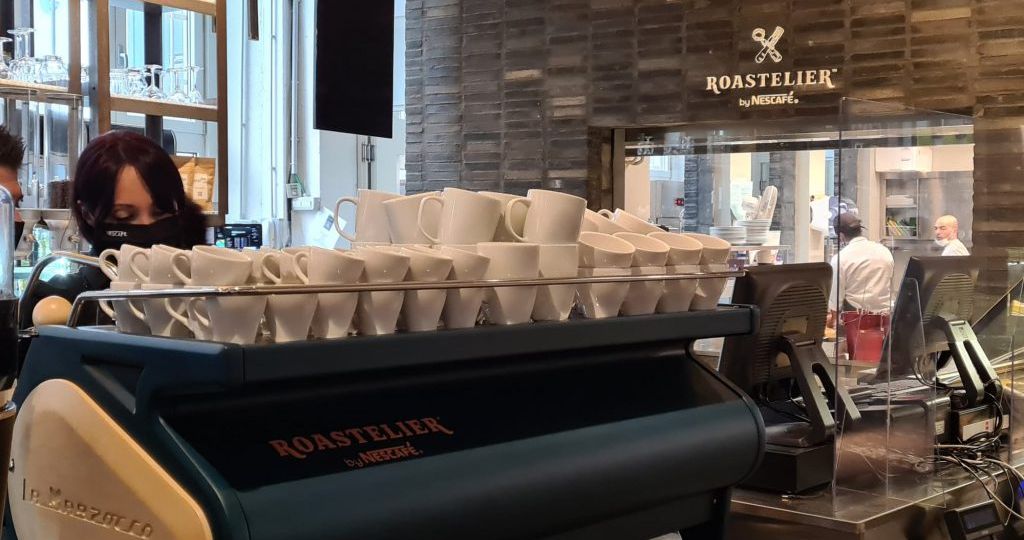
In recent years, the trend of coffee shops roasting their own beans has gained significant momentum. This practice, once a hallmark of only the most dedicated artisanal coffee houses, has now become a symbol of quality and commitment to the craft of coffee making.
The rise in popularity of in-house roasting is not just a fad but a reflection of a growing demand for authenticity, traceability, and excellence in the coffee industry. Consumers are increasingly seeking out establishments that offer a unique and enriching coffee experience, making the choice to roast in-house a strategic one for coffee shops aiming to stand out in a crowded market.
Enhanced Flavor and Freshness
Roasting coffee beans on-site is a practice that directly impacts the flavor and freshness of the coffee served. The process of roasting coffee is delicate, with the potential to unlock a bean’s aroma, acidity, and body.
By managing this process in-house, coffee shops have the unique opportunity to ensure that their coffee is served at the peak of its flavor profile, offering customers an unparalleled taste experience. This fresh-from-the-roaster quality can’t be matched by beans roasted off-site, often weeks or months before reaching the consumer.
Unique Blends and Signature Flavors
One of the most compelling reasons for a coffee shop to roast its own beans is the ability to create unique blends and signature flavors. This not only sets a coffee shop apart from competitors but also allows it to craft a distinct identity in the marketplace.
Roasting in-house affords the flexibility to experiment with different beans and roasting profiles, leading to the development of exclusive blends that can become a hallmark of the brand. Such uniqueness contributes to building a loyal customer base that returns for the distinct taste that can’t be found elsewhere.
Increased Customer Engagement
The process of roasting beans in-house can also serve as a powerful tool for customer engagement. The sights, sounds, and smells of coffee roasting can transform a coffee shop into a sensory experience, inviting customers into the journey from bean to cup.
By educating patrons about the roasting process, the origins of the beans, and the choices made to enhance their coffee’s flavor, shops can foster a deeper connection with their clientele. This educational aspect not only enriches the customer’s visit but also builds appreciation and loyalty towards the coffee shop’s brand and ethos.
Cost Analysis
The decision for a coffee shop to start roasting its own beans entails significant initial investments. The purchase of roasting equipment, which can vary greatly in size and complexity, represents a considerable upfront cost. Prices can range from a few thousand dollars for small, basic roasters to over $100,000 for larger, more advanced systems.
In addition to the roaster itself, shops may need to invest in renovations to ensure proper ventilation and compliance with local health and safety regulations. These modifications can include the installation of specialized ventilation systems to remove smoke and reduce the risk of fire, further adding to the initial capital required.
Despite these initial costs, the long-term financial benefits of in-house roasting can be substantial. Roasting beans on-site allows coffee shops to purchase green beans at a lower cost, significantly reducing the cost of goods sold. This, coupled with the ability to offer a unique product, can lead to increased profit margins.
Moreover, the option to sell beans wholesale to other businesses or directly to consumers adds an additional revenue stream, further enhancing the financial appeal of in-house roasting.
Operational Considerations
The operational implications of in-house roasting are also critical to consider. Space is a primary concern, as coffee roasting equipment and the associated storage for green and roasted beans require significant room. This space must not only accommodate the roasting equipment but also ensure a safe and efficient workflow for staff.
Additionally, the process of roasting coffee requires skilled labor. Employees must be trained not only in the mechanics of using the roasting equipment but also in the art of crafting the perfect roast, a process that can be as nuanced as it is complex.
Balancing the focus between roasting and the core operations of the coffee shop is another important consideration. While roasting can enhance a coffee shop’s offerings and brand, it should not detract from the quality of service and the overall customer experience. Managing this balance is key to leveraging the benefits of in-house roasting without compromising the shop’s primary mission of serving exceptional coffee and food in a welcoming environment.
Part 4: Case Studies
Several coffee shops have successfully integrated in-house roasting into their operations, setting benchmarks for quality and innovation in the industry. Beverly Bakery & Cafe, for instance, has built a reputation not just for its delicious baked goods but also for its house-roasted coffee, which draws from carefully sourced beans to create a diverse and flavorful coffee menu.
Bridgeport Coffee House, with its commitment to roasting on-site, has become a source of local pride and a destination for coffee aficionados seeking out its unique, meticulously crafted brews. Intelligentsia Coffee, a pioneer in the third-wave coffee movement, demonstrates the scalability of the in-house roasting model, maintaining high standards of quality and sustainability as it expands its footprint. These examples illustrate the potential of in-house roasting to not only elevate a coffee shop’s product offering but also to embed it more deeply in the fabric of its community.
Navigating the Initial Investment
The substantial initial investment required for in-house coffee roasting can be daunting for many coffee shop owners. Strategies to manage these costs include leasing equipment instead of purchasing it outright, buying used roasters in good condition, and exploring financing options that allow for the spreading out of payments over time.
Additionally, shops can start with a smaller roaster to minimize initial costs, then upgrade as the business grows and roasting demand increases. Careful planning of space modifications can also help manage expenses, ensuring renovations are only made as necessary to meet health and safety standards.
Maintaining Quality and Consistency
Ensuring the quality and consistency of in-house roasted coffee is paramount. This requires a commitment to ongoing training for staff involved in the roasting process. Investing in quality control measures, such as regular cupping sessions and maintaining strict roasting profiles, helps to ensure that each batch of coffee meets the shop’s standards.
Building a relationship with reliable green coffee suppliers who provide high-quality beans is also crucial. Finally, staying informed about roasting techniques and industry trends can help in continually refining the roasting process.
FAQs
What are the different levels of coffee roasts?
Coffee beans can be roasted to various degrees, ranging from light to dark. Light roasts have a lighter color and a more pronounced acidity, while dark roasts have a darker color, less acidity, and a more pronounced bitterness.
What are the benefits of roasting coffee in-house?
Roasting coffee in-house allows for greater control over the flavor and freshness of the coffee, the ability to create unique blends, and enhances customer engagement through educational opportunities.
How can I start roasting coffee in my shop?
Starting in-house roasting involves researching and purchasing the right equipment, acquiring knowledge about roasting processes, and ensuring compliance with local health and safety regulations. It also involves training staff and establishing a quality control process to maintain consistency.
Conclusion
In-house coffee roasting presents both challenges and opportunities for coffee shops. Despite the initial investment and the need for careful management of the roasting process, the benefits—ranging from enhanced flavor profiles to increased customer engagement—make it a worthwhile endeavor.
Coffee shops that successfully navigate these challenges can set themselves apart in a competitive market, offering customers a unique and high-quality coffee experience that celebrates the craft of coffee from bean to cup.









